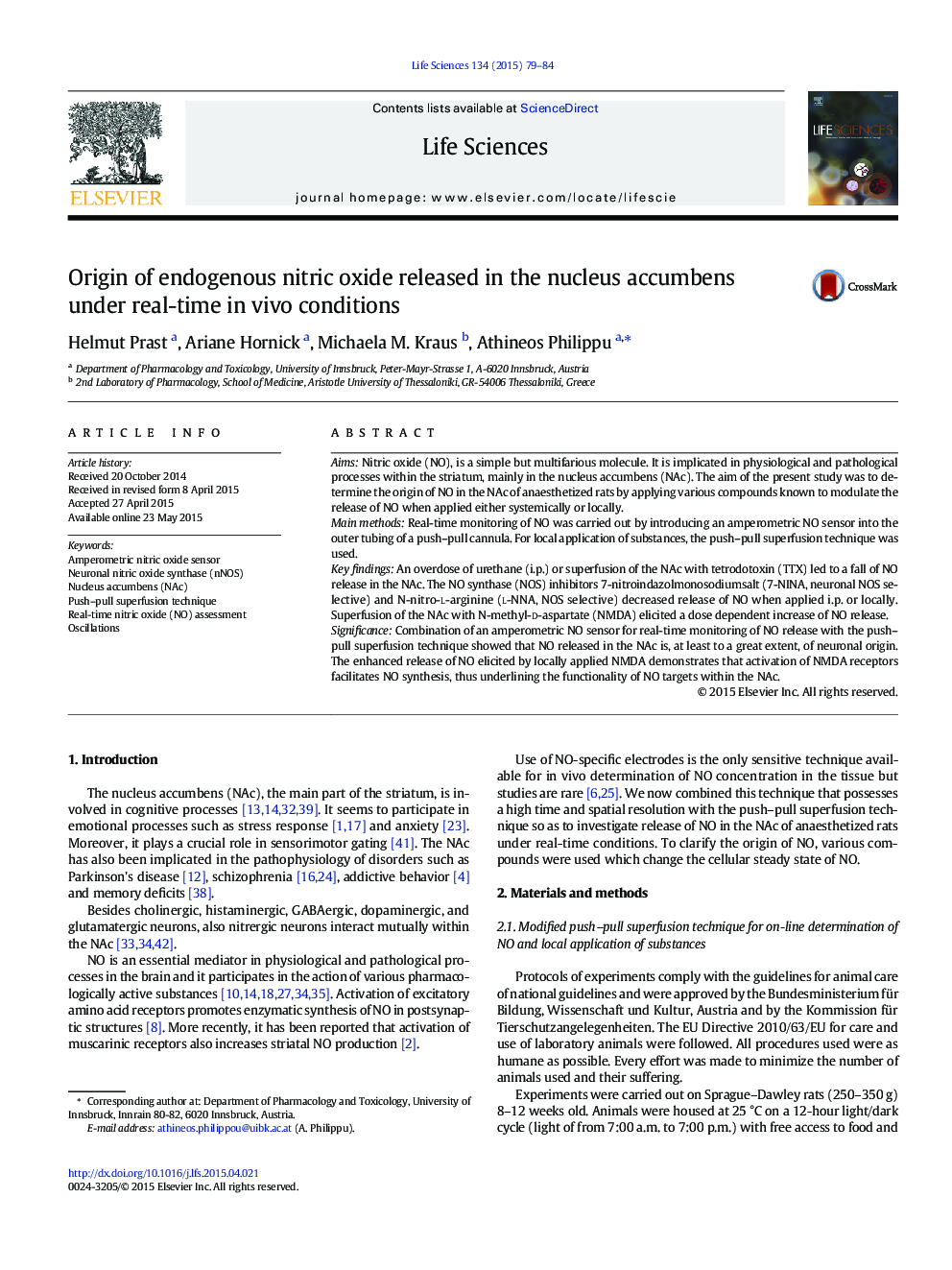| کد مقاله | کد نشریه | سال انتشار | مقاله انگلیسی | نسخه تمام متن |
|---|---|---|---|---|
| 2550900 | 1560594 | 2015 | 6 صفحه PDF | دانلود رایگان |

AimsNitric oxide (NO), is a simple but multifarious molecule. It is implicated in physiological and pathological processes within the striatum, mainly in the nucleus accumbens (NAc). The aim of the present study was to determine the origin of NO in the NAc of anaesthetized rats by applying various compounds known to modulate the release of NO when applied either systemically or locally.Main methodsReal-time monitoring of NO was carried out by introducing an amperometric NO sensor into the outer tubing of a push–pull cannula. For local application of substances, the push–pull superfusion technique was used.Key findingsAn overdose of urethane (i.p.) or superfusion of the NAc with tetrodotoxin (TTX) led to a fall of NO release in the NAc. The NO synthase (NOS) inhibitors 7-nitroindazolmonosodiumsalt (7-NINA, neuronal NOS selective) and N-nitro-l-arginine (l-NNA, NOS selective) decreased release of NO when applied i.p. or locally. Superfusion of the NAc with N-methyl-d-aspartate (NMDA) elicited a dose dependent increase of NO release.SignificanceCombination of an amperometric NO sensor for real-time monitoring of NO release with the push–pull superfusion technique showed that NO released in the NAc is, at least to a great extent, of neuronal origin. The enhanced release of NO elicited by locally applied NMDA demonstrates that activation of NMDA receptors facilitates NO synthesis, thus underlining the functionality of NO targets within the NAc.
Figure optionsDownload high-quality image (324 K)Download as PowerPoint slide
Journal: Life Sciences - Volume 134, 1 August 2015, Pages 79–84